Free NCERT Class 10 Maths Chapter 2 Notes - Download PDF
A polynomial is an algebraic expression that contains a variable and a degree. In polynomial theory, a variable is also called an indeterminate, and the degree is known as the highest power of the variable. Polynomial expressions are made by arithmetic operations like addition, subtraction, and multiplication. These arithmetic operations are used to define the relationship between variables. Polynomials are used in many areas, like science, economics, mathematics, engineering, etc. In these areas, polynomials are considered the fundamental tool for analysis and solving problems. The main purpose of these NCERT Notes is to provide students with an efficient study material from which they can revise the entire chapter.
This Story also Contains
- Polynomials Class 10 Notes: Free PDF Download
- NCERT Class 10 Maths Chapter 2 Notes: Polynomials
- How to Use the Polynomials Class 10 Notes Effectively?
- Polynomials Class 10 Notes: Previous Year Question and Answer
- NCERT Class 10 Maths Notes – Chapter-Wise Links
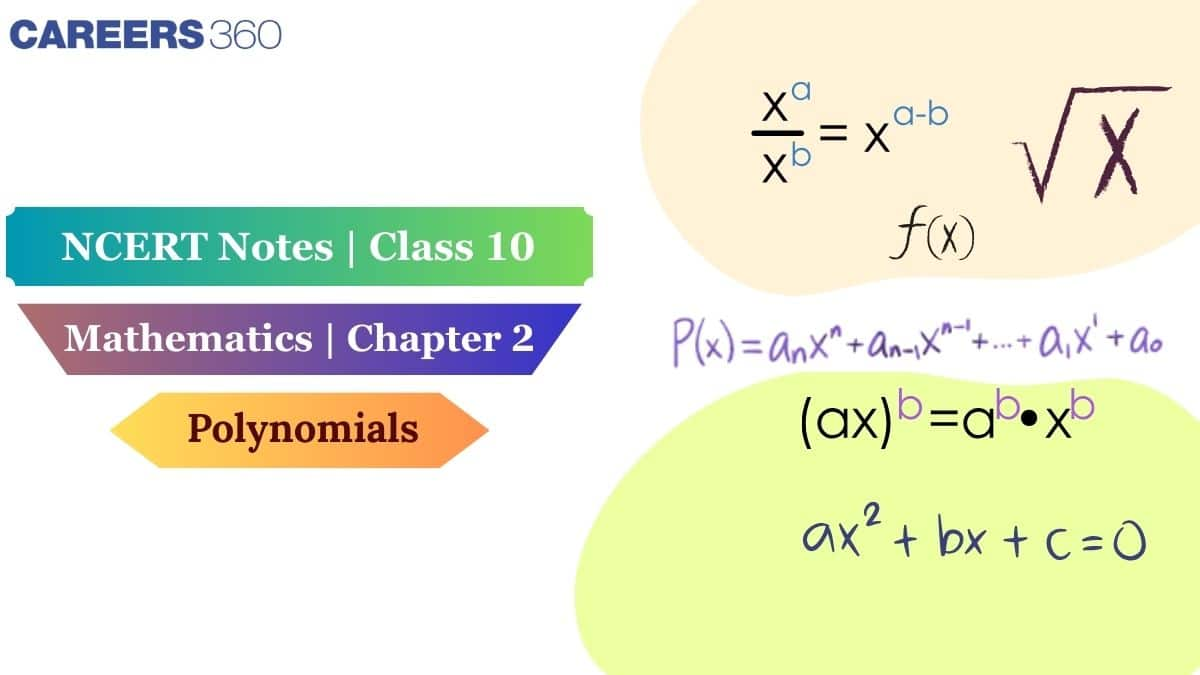
After completing the textbook exercises and solutions, students require a type of study material that enables them to recall concepts more quickly. Polynomials Class 10 Notes are very useful in this regard. In this article on NCERT Class 10 Maths Notes, everything from definitions and properties to detailed notes, formulas, diagrams, and solved examples is thoroughly covered by our subject matter experts at Careers360 to help students understand important concepts and feel confident about their studies. These NCERT Class 10 Maths Chapter 2 Notes are made in accordance with the latest syllabus while keeping it simple, well-structured and understandable. Find everything in one place – NCERT Books, Solutions, Syllabus, and Exemplar Problems with Solutions – in this NCERT article.
Also, read,
Polynomials Class 10 Notes: Free PDF Download
Use the link below to download the Polynomials Class 10 Notes PDF for free. After that, you can view the PDF anytime you desire without internet access. It is very useful for revision and last-minute studies.
NCERT Class 10 Maths Chapter 2 Notes: Polynomials
These NCERT notes for Class 10 Maths Chapter 2 Polynomials have been prepared by Careers360 experts to make learning simpler and to help you score better in exams.
Polynomials: It is an algebraic expressions that can have an exponent as a real number or a whole number. A polynomial represented by p(x), where p is a polynomial in x, and the exponent of x is called the highest degree of x.
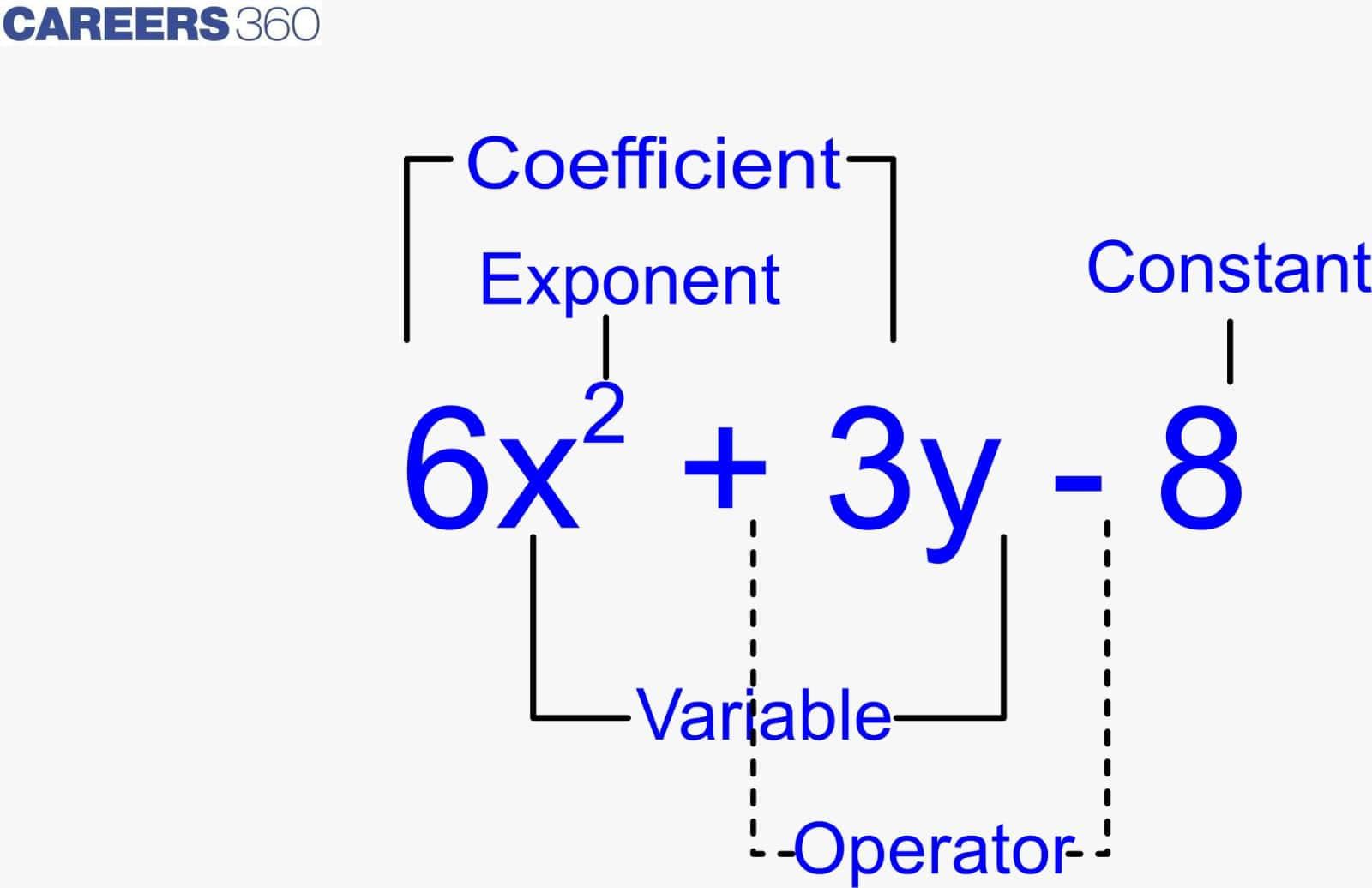
Algebraic Expressions: An algebraic expression is an equation with variables and constants that is made up of arithmetic operators.
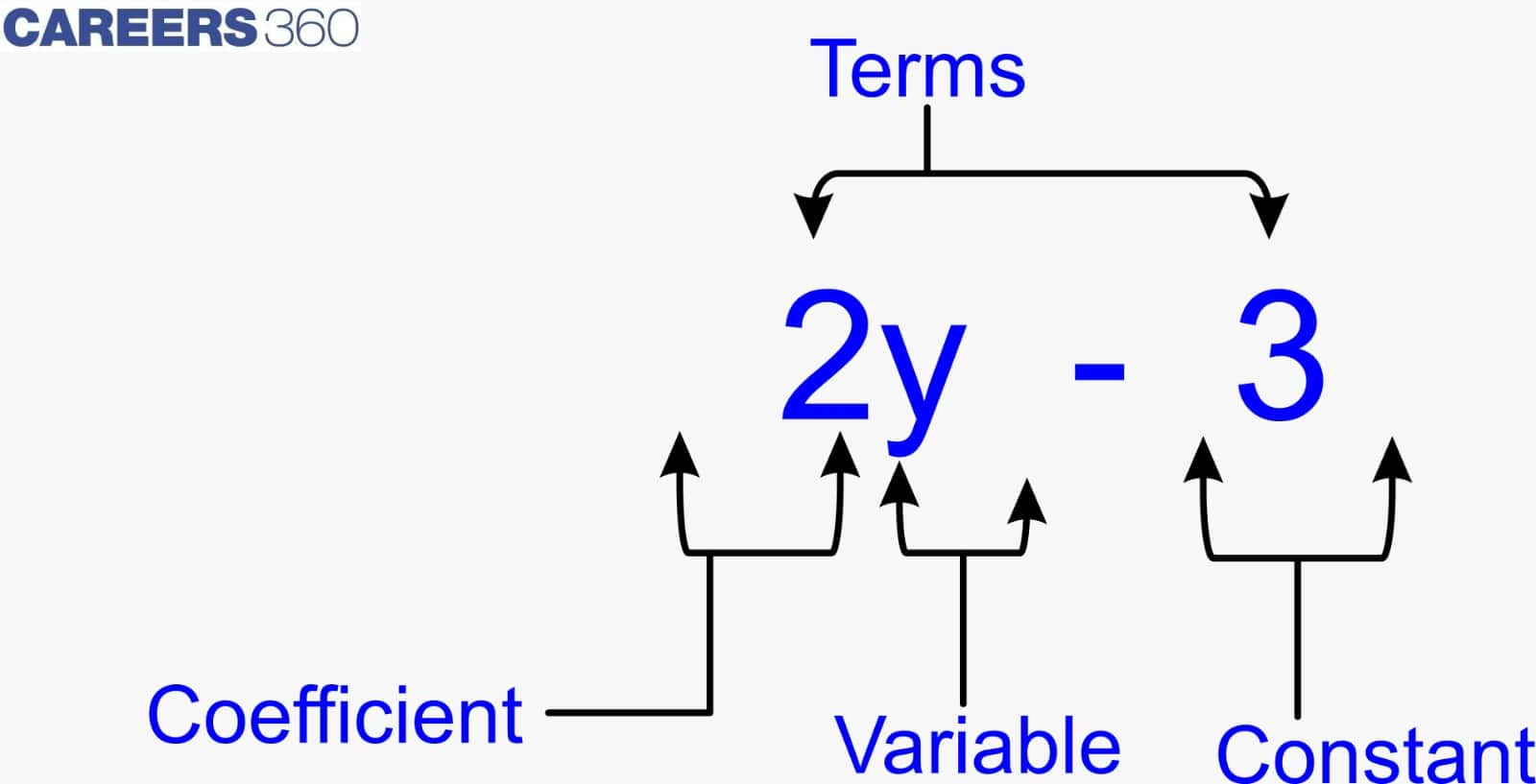
Types of Polynomials
Polynomials can be divided into two categories based on the following characteristics:
1. Number of terms
2. Degree of polynomials
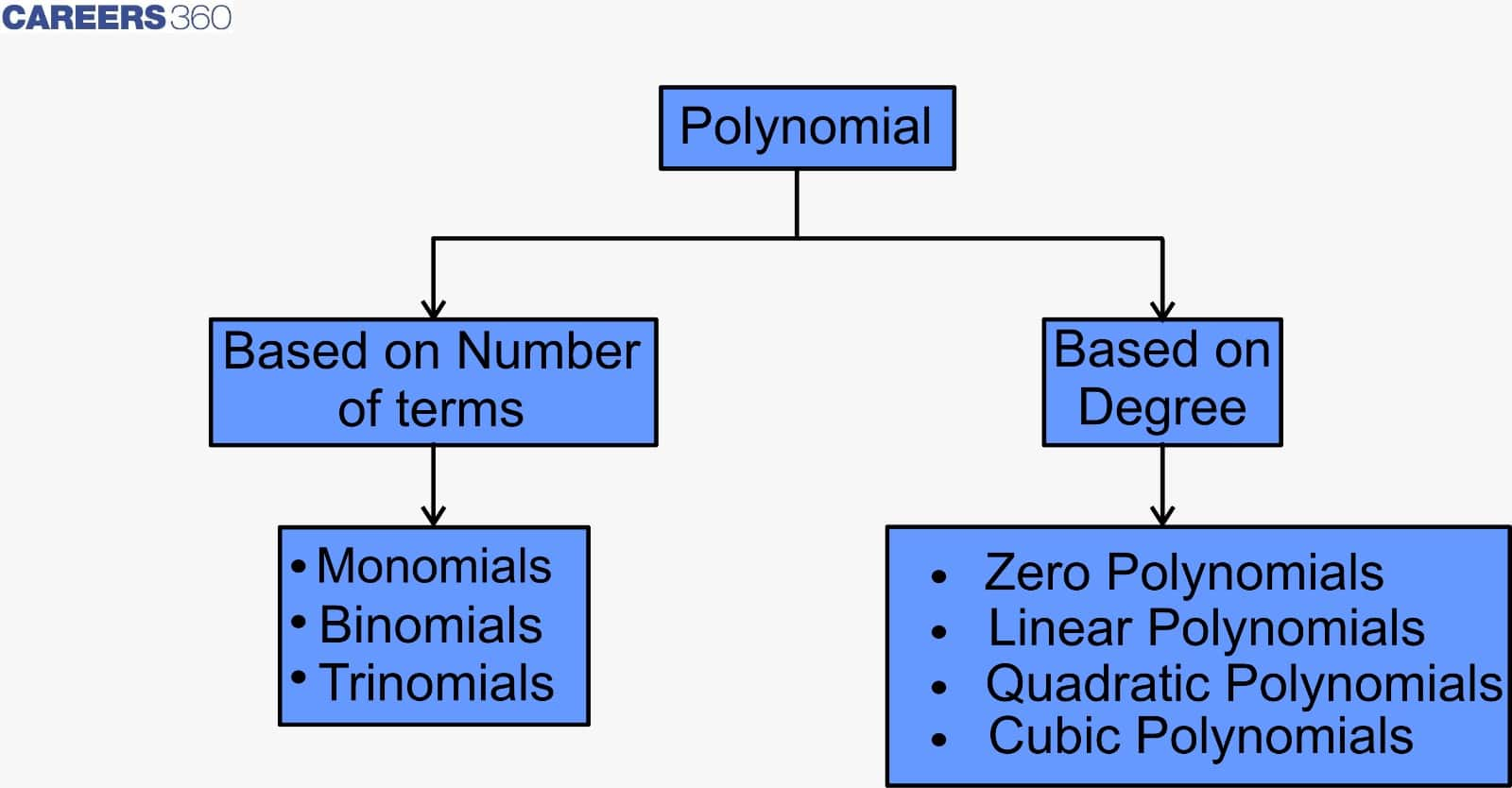
Based on the number of Terms
A polynomial expression can have one or more terms, and according to the number of terms, polynomials are as follows:
1. Monomials: A polynomial that has only one term is called a monomial.
Example: 3x, 5pq, 6p2
2. Binomials: A polynomial that has two unlike terms is called a binomial.
Example: 3x + 2, 4x2 + 6
3. Trinomials: A polynomial that has three unlike terms is called a trinomial.
Example: 6x2 + 3x - 2
Based on Degree of Polynomials:
1. Zero Polynomials: A polynomial that has 0 as a degree is called a zero or constant polynomial.
Example: 2x0, 5y0
2. Linear Polynomial: A polynomial that has 1 as a degree is called a linear polynomial.
Example: 3x + 1, 4y + 5
3. Quadratic Polynomial: A polynomial that has 2 as a degree is called a quadratic polynomial.
Example: 5x2 + 3x + 1
4. Cubic Polynomial: A polynomial that has 3 as a degree is called a cubic polynomial.
Example: 7x3 + 5x - 2
Zeros of a Polynomial
The value of the polynomials that make the polynomials equal to zero.
Example: For the polynomial p(x) = x2 - 9, the zeros are x=3 and x=−3, because p(3) = 32 - 9 = 0 and p(−3) = $-\frac{3}{2}−9=0$.
Graphical Representation
The representation of different types of polynomials is as follows.

Geometrical Meaning of the Zeros of a Polynomial:
When the x-coordinate of the point of intersection is on the x-axis of the graph, then this is called geometrically the zeroes of a polynomial.
Geometrical Meaning of Zeros of Linear Polynomial:
The general form of the linear polynomial is y = ax + b, where a must not be equal to 0. For example, the equation is y = 3x + 1 for x = 2 and -2, the line of the graph passing through the points (2, 7) and (-2, -5)
|
x
|
2
|
-2
|
|
y = 3x + 1
|
7
|
-5
|
The graph is shown below:

Geometrical Meaning of Zeros of a Quadratic Polynomial:
The general form of the quadratic polynomials is ax² + bx + c, where a is not equal to zero. The graph for a quadratic equation looks like a symbol U or a parabola, and the direction of U or the parabola may be upward or downward, depending on the value of a. It can cut the points at zero, one, or two points.
The geometrical representation of quadratic polynomials when a > 0 and a < 0 is as follows:
According to the shape of the graph, there are three possible cases:
Case 1: When the graph cuts the x-axis at two distinct points, P and P'. Here, P and P' are the zeros of the quadratic equation ax² + bx + c.

Case 2: When the graph cuts the x-axis at exactly one point, i.e., at two coincident
points. Therefore, the two points P and P' of Figure 1 of case 1 coincide here to become one point P. So, the x-coordinate of P is the only zero for the quadratic polynomial ax² + bx + c.
.jpeg)
Case 3: When the graph is either completely above the x-axis or completely below
the x-axis, then it does not cut the x-axis at any point. So, the quadratic polynomial ax² + bx + c has no zero in this case.
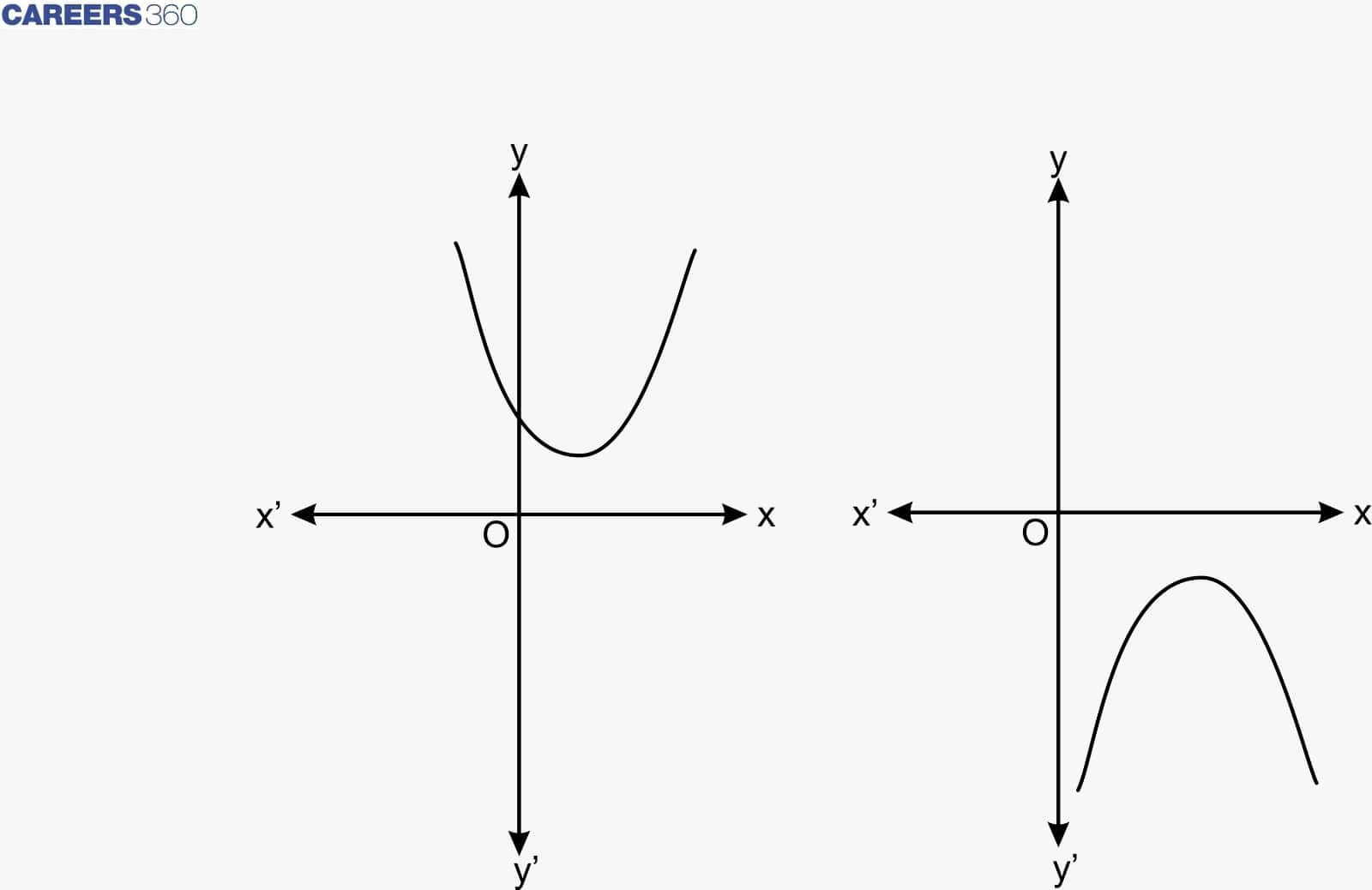
Relationship Between Zeros and Coefficients of a Polynomial:
For quadratic Polynomials
Let $\alpha$ and $\beta$ be the zeroes (roots) of the quadratic polynomial $a x^2+b x+c$, then
$
\begin{gathered}
\text { Sum of the zeroes }(\alpha+\beta)=-\frac{b}{a}=\frac{- \text { Coefficient of } x}{\text { Coefficient of } x^2} \\
\text { Product of the zeroes }(\alpha \beta)=\frac{c}{a}=\frac{\text { Constant term }}{\text { Coefficient of } x^2}
\end{gathered}
$
Example: x2 + 7x + 10
Sum of the zeroes (α + β) = $\frac{−7}1=-7$
Product of the zeroes (αβ) = $\frac{10}1=10$
For Cubic Polynomials
Let $\alpha, \beta$, and $\gamma$ be the zeroes (roots) of the cubic polynomial $a x^3+b x^2+c x+d$, then
Sum of the zeroes: $\alpha+\beta+\gamma=-\frac{b}{a}$
Sum of the products of zeroes taken two at a time: $\alpha \beta+\beta \gamma+\gamma \alpha=\frac{c}{a}$
Product of the zeroes: $\alpha \beta \gamma=-\frac{d}{a}$
Divisor Algorithm
If P(x), D(x), Q(x) and R(x) are the three polynomials where,
P(x) = Polynomial
D(x) = Divisor polynomial
Q(x) = Quotient polynomial
R(x) = Remainder polynomial
Therefore, the formula for the division algorithm is as follows:
P(x) = D(x) × Q(x) + R(x)
Where D(x) ≠ 0, and R(x) = 0 or the degree of R(x) < the degree of D(x).
Example: Divide the cubic polynomial 4x3 + 3x2 + 3x + 2 by the quadratic polynomial x2 + 2x + 1
The division is shown in the figure:
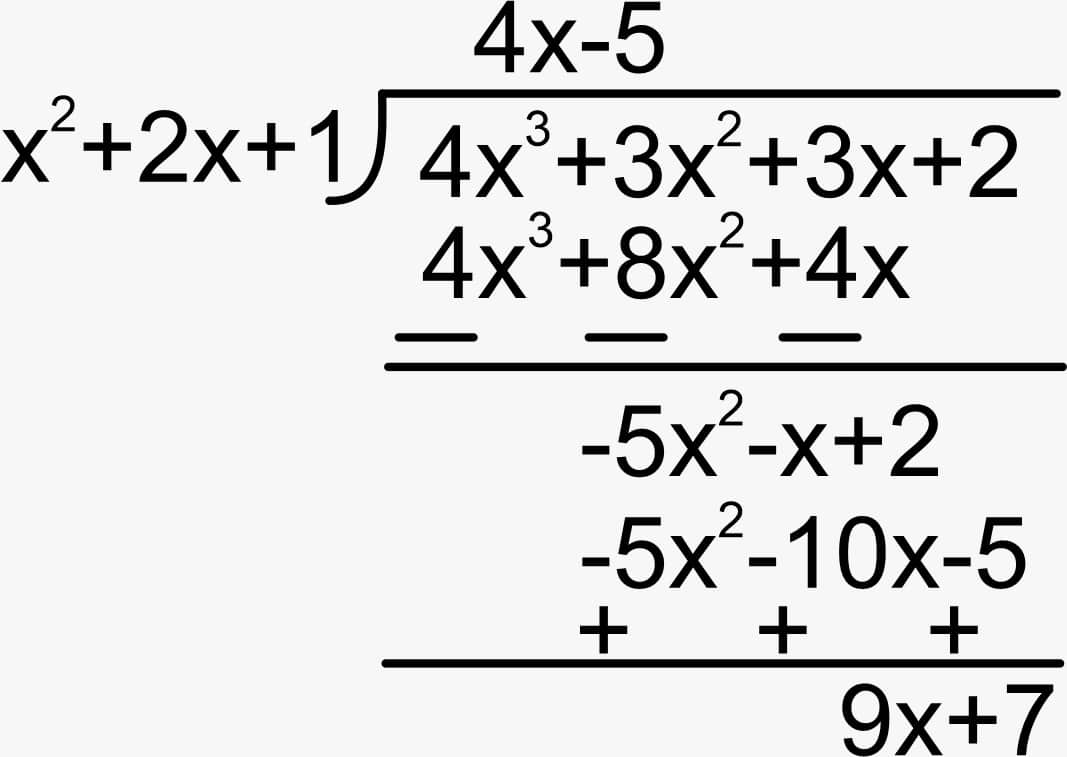
Proof Using Divisor Algorithm:
P(x) = D(x) × Q(x) + R(x)
P(x) = 4x3 + 3x2 + 3x + 2
D(x) = x2 + 2x + 1
Q(x) = 4x - 5
R(x) = 9x + 7
Now, putting the values in the formula, we get:
4x3 + 3x2 + 3x + 2 = (x2 + 2x + 1) × (4x - 5) + 9x + 7
⇒ 4x3 + 3x2 + 3x + 2 = 4x3 + 8x2 + 4x - 5x2 - 10x - 5 + 9x + 7
⇒ 4x3 + 3x2 + 3x + 2 = 4x3 + 3x2 + 3x + 2
⇒ L.H.S. = R.H.S.
How to Use the Polynomials Class 10 Notes Effectively?
Understanding how zeroes function and how they relate to a polynomial's coefficients makes polynomials easier to understand. This chapter explains these ideas with examples and graphs. Class 10 Maths chapter 2 notes help us revise effectively. Here are some more points on how these notes are important.
- Read the idea of zeroes and look at simple graphs to see how the curve meets the x-axis.
- Practice questions on the relationship between zeroes and coefficients to make the formula easy to use.
- Keep the NCERT Class 10 Maths chapter 2 notes beside us while solving exercises to check formulas and avoid mistakes.
- Use the NCERT Class 10 Maths chapter 2 notes to build a strong base, because these concepts help again in higher classes when polynomials become more detailed.
Polynomials Class 10 Notes: Previous Year Question and Answer
Given below are some previous year question answers of various examinations from the NCERT class 10 chapter 2 Polynomials:
Question 1: Find the zeroes of the polynomial $2 x^2+7 x+5$
Solution:
For the standard quadratic equation $ax^2 + bx + c = 0$,
The sum of the roots is $-\frac{b}{a}$
The product of the roots is $\frac{c}{a}$
Given equation, $2x^2 + 7x + 5 = 0$.
Factors by Middle term splitting: $(2x + 5)(x + 1) = 0$.
Zeroes: $x = -\frac{5}{2}$ and $x = -1$.
Question 2: $\alpha, \beta$ are zeroes of the polynomial $3 x^2-8 x+k$. Find the value of $k$, if $\alpha^2+\beta^2=\frac{40}{9}$.
Solution:
Given $\alpha + \beta = \frac{8}{3}$ and $\alpha \beta = \frac{k}{3}$
For the standard quadratic equation $ax^2 + bx + c = 0$,
The sum of the roots is $-\frac{b}{a}$
The product of the roots is $\frac{c}{a}$
$\alpha^2 + \beta^2 = (\alpha + \beta)^2 - 2\alpha \beta = \left(\frac{8}{3}\right)^2 - 2\left(\frac{k}{3}\right) = \frac{64}{9} - \frac{2k}{3}$.
$\alpha^2 + \beta^2 = \frac{40}{9}$ (Given)
⇒ $\frac{40}{9} = \frac{64}{9} - \frac{2k}{3}$
⇒ $\frac{2k}{3} = \frac{64}{9} - \frac{40}{9} $
⇒ $\frac{2k}{3}= \frac{24}{9} $
⇒ $\frac{2k}{3}= \frac{8}{3}$
⇒ $2k = 8$
⇒ $k = 4$
Hence, the correct answer is $4$.
Question 3: Find the zeroes of the polynomial $\mathrm{p}(x)=3 x^2+x-10$
Solution:
For $p(x) = 3x^2 + x - 10$,
Standard quadratic equation: $ax^2+bx+c=0$, for which
Sum of the roots $=-\frac{b}{a}$
Product of the roots = $\frac{c}{a}$
We have, $a=3,b=1$ and $c=-10$
Let, $3x^2 + x - 10 = 0$
Now, let us factorise the middle term of the polynomial,
$\Rightarrow 3x^2+6x-5x-10=0$
$\Rightarrow 3x(x+2)-5(x+2)=0$
$\Rightarrow (3x - 5)(x + 2) = 0$
Now, for this to be true, either $(3x - 5)=0$ or, $(x + 2) = 0$
Hence, the zeroes are: $x = \frac{5}{3}$ and $x = -2$.
NCERT Class 10 Maths Notes – Chapter-Wise Links
All the links to chapter-wise notes for NCERT class 10 maths are given below:
NCERT Exemplar Solutions for Class 10
Students must check the NCERT Exemplar solutions for class 10 of Mathematics and Science Subjects.
NCERT Solutions for Class 10
Students must check the NCERT solutions for class 10 of Mathematics and Science Subjects.
NCERT Books and Syllabus
To learn about the NCERT books and syllabus, read the following articles and get a direct link to download them.
Frequently Asked Questions (FAQs)
Definitely, these NCERT Class 10 Maths chapter 2 notes condense formulas, theorems, and solved examples, making them perfect for quick revision before exams.
Many educational platforms, such as Careers360, offer free downloadable PDFs of Class 10 Polynomials notes. Students can download the PDF for free from this article itself.
If P(x) is a polynomial and divides this polynomial by D(x), and gets the quotient Q(x) and the polynomial remainder R(x), then,
P(x)D(x) = Q(x)+R(x)
Students can determine the value of the variable or determine the zeros of an equation, and then plot these values on the graph and create a smooth curve by connecting them.
A polynomial is an algebraic expression that can have an exponent as a real number or a whole number. A polynomial represented by p(x), where p is a polynomial in x, and the exponent of x is called the highest degree of x.
Linear polynomials have a degree of 1
(example: 2x + 3)
Quadratic polynomials have a degree of 2
(Example: 2x² + 5 + 2)
Cubic polynomials have a degree of 3
(Example: 3x³ + 2x² + x + 2)
Polynomials can be divided into two categories based on the number of terms and based on degree. Their subcategories are monomials, binomials, trinomials, zero polynomials, quadratic polynomials, and cubic polynomials.
Popular Questions
Courses After 12th
Applications for Admissions are open.
As per latest syllabus. Physics formulas, equations, & laws of class 11 & 12th chapters
JEE Main Important Chemistry formulas
Get nowAs per latest syllabus. Chemistry formulas, equations, & laws of class 11 & 12th chapters
JEE Main high scoring chapters and topics
Get nowAs per latest 2024 syllabus. Study 40% syllabus and score upto 100% marks in JEE
JEE Main Important Mathematics Formulas
Get nowAs per latest syllabus. Maths formulas, equations, & theorems of class 11 & 12th chapters
